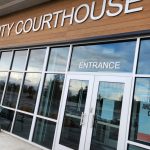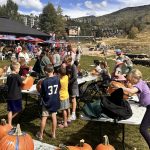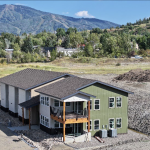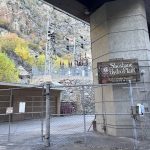Guest Column: Private lands hold key to future of Colorado wildlife
Guest Column

John F. Russell/Steamboat Pilot & Today
Routt County residents have the chance to see “Preserved,” a powerful new documentary about Ted Turner’s decades-long efforts to restore Vermejo, his 558,000-acre property that stretches across northern New Mexico and southern Colorado.
The film, to be shown at 7 p.m. Tuesday, Sept. 23, at the Bud Werner Library, captures not only the remarkable recovery of a once-degraded landscape, but also a truth we too often overlook: the future of wildlife depends on private land.
Turner’s work at Vermejo is inspiring. He has shown that with vision, resources and patience, grasslands, forests and rivers can recover — and that when they do, wildlife flourishes. But the story of Vermejo is not just about one individual. It is about the essential role that private landowners play across Colorado and the West.
The majority of wildlife in the United States depends on private land for survival. In Colorado, more than 60% of the land, including many of the most essential wildlife habitats, are privately owned and managed. The stewardship decisions and investments made by landowners determine whether we will still hear elk bugling, see sandhill cranes soaring, and watch native trout swimming in our rivers a generation from now.
Too often, conservation is framed only as a matter of public lands and government action. These are important pieces of the puzzle, but they are not enough. Without healthy, intact private lands, the habitats that sustain Colorado’s wildlife will be fragmented and lost.
Ranchers and farmers are on the frontlines of this challenge every day, balancing food production, water management, livelihoods and habitat needs. They are quietly providing the open space and ecological services that benefit all of us.
The lesson of “Preserved” is that land can be healed — and when it is, wildlife and communities both thrive. Turner had the means to take on restoration at a vast scale, but across our state, thousands of families are doing similar work in their own ways.
They are improving rangelands, managing forests to reduce wildfire risk, restoring streams and creating migration corridors. Many have been doing it for generations. Their efforts are often unseen, but they are indispensable.
If we care about the future of nature in Colorado, we must care about the future of private lands and the people who steward them. That means creating policies and financial tools that help landowners sustain both their livelihoods and the landscapes they care for. It means recognizing that conservation is not only about preserving land in the abstract — it is about supporting those who live and work on it every day.
As “Preserved” reminds us, conservation is not just about loss. It is about possibility. If we support landowners in their role as stewards, Colorado’s wildlife heritage can remain vibrant and abundant for generations to come.
Hallie Mahowald is chief programs officer with the Western Landowners Alliance and is based in Salida.

Support Local Journalism

Support Local Journalism
Readers around Steamboat and Routt County make the Steamboat Pilot & Today’s work possible. Your financial contribution supports our efforts to deliver quality, locally relevant journalism.
Now more than ever, your support is critical to help us keep our community informed about the evolving coronavirus pandemic and the impact it is having locally. Every contribution, however large or small, will make a difference.
Each donation will be used exclusively for the development and creation of increased news coverage.









